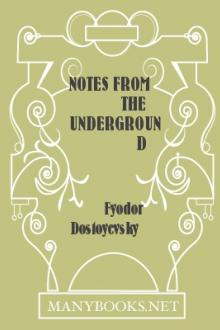Ancient America, in Notes on American Archaeology by John D. Baldwin (best ebook reader ubuntu .txt) 📖

- Author: John D. Baldwin
- Performer: -
Book online «Ancient America, in Notes on American Archaeology by John D. Baldwin (best ebook reader ubuntu .txt) 📖». Author John D. Baldwin
These Aztecs were manifestly something very different from “Mexican savages.” At the same time, they were less advanced in many things than their predecessors. Their skill in architecture and architectural ornamentation did not enable them to build such cities as Mitla and Palenque, and their “picture writing” was a much ruder form of the graphic art than the phonetic system of the Mayas and Quichés. It does not appear that they ever went so far in literary improvement as to adopt this simpler and more complete system for any purpose whatever. If the country had never, in the previous ages, felt the influence of a higher culture than that of the Aztecs, it would not have now, and never could have had, ruined cities like Mitla, Copan, and Palenque. Not only was the system of writing shown by the countless inscriptions quite beyond the attainments of Aztec art, but also the abundant sculptures and the whole system of decoration found in the old ruins.
X.ANCIENT PERU.
The ruins of Ancient Peru are found chiefly on the elevated table-lands of the Andes, between Quito and Lake Titicaca; but they can be traced five hundred miles farther south, to Chili, and throughout the region connecting these high plateaus with the Pacific coast. The great district to which they belong extends north and south about two thousand miles. When the marauding Spaniards arrived in the country, this whole region was the seat of a populous and prosperous empire, complete in its civil organization, supported by an efficient system of industry, and presenting a very notable development of some of the more important arts of civilized life. These ruins differ from those in Mexico and Central America. No inscriptions are found in Peru; there is no longer a “marvelous abundance of decorations;” nothing is seen like the monoliths of Copan or the bas-reliefs of Palenque. The method of building is different; the Peruvian temples were not high truncated pyramids, and the great edifices were not erected on pyramidal foundations. The Peruvian ruins show us remains of cities, temples, palaces, other edifices of various kinds, fortresses, aqueducts (one of them four hundred and fifty miles long), great roads (extending through the whole length of the empire), and terraces on the sides of mountains. For all these constructions the builders used cut stone laid in mortar or cement, and their work was done admirably, but it is every where seen that the masonry, although sometimes ornamented, was generally plain in style and always massive. The antiquities in this region have not been as much explored and described as those north of the isthmus, but their general character is known, and particular descriptions of some of them have been published.
THE SPANISH HUNT FOR PERU.The Spanish conquest of Peru furnishes one of the most remarkable chapters in the history of audacious villainy. It was the work of successful buccaneers as unscrupulous as any crew of pirates that ever robbed and murdered on the ocean. After their settlements began on the islands and the Atlantic coast, rumors came to them of a wonderful country somewhere at a distance in the west. They knew nothing of another ocean between them and the Indies; the western side of the continent was a veiled land of mystery, but the rumors, constantly repeated, assured them that there was a country in that unknown region where gold was more abundant than iron among themselves. Their strongest passions were moved; greed for the precious metals and thirst for adventures.
Balboa was hunting for Peru when he discovered the Pacific, about 1511 A.D. He was guided across the isthmus by a young native chief, who told him of that ocean, saying it was the best way to the country where all the common household utensils were made of gold. At the Bay of Panama Balboa heard more of Peru, and went down the coast to find it, but did not go south much beyond the eighth degree of north latitude. In his company of adventurers at this time was Francisco Pizarro, by whom Peru was found, subjugated, robbed, and ruined, some fifteen or twenty years later. Balboa was superseded by Pedrarias, another greedy adventurer, whose jealousy arrested his operations and finally put him to death. The town of Panama was founded in 1519 by this Pedrarias, chiefly as a point on the Pacific from which he could seek and attack Peru. Under his direction, in 1522, the search was attempted by Pascual de Andagoya, but he failed to get down the coast beyond the limit of Balboa’s exploration. Meanwhile clearer and more abundant reports of the rich and marvelous nation to be found somewhere below that point were circulated among the Spaniards, and their eagerness to reach it became intense.
In 1524, three men could have been seen in Panama busily engaged preparing another expedition to go in search of the golden country. These were Francisco Pizarro, a bold and capable adventurer, who could neither read nor write; Diego de Almagro, an impulsive, passionate, reckless soldier of fortune, and Hernando de Luque, a Spanish ecclesiastic, Vicar of Panama, and a man well acquainted with the world and skilled in reading character, acting at this time, it is said, for another person who kept out of view. They had formed an alliance to discover and rob Peru. Luque would furnish most of the funds, and wait in Panama for the others to do the work. Pizarro would be commander-in-chief. The vessels used would necessarily be such as could be built at Panama, and, therefore, not very efficient.
Pizarro went down the coast, landing from time to time to explore and rob villages, until he reached about the fourth degree of north latitude, when he was obliged to return for supplies and repairs. It became necessary to reconstruct the contract and allow Pedrarias an interest in it. On the next voyage, one of the vessels went half a degree south of the equator, and encountered a vessel “like a European caravel,” which was, in fact, a Peruvian balsa, loaded with merchandise, vases, mirrors of burnished silver, and curious fabrics of cotton and woolen.
It became again indispensable to send back to Panama for supplies and repairs, and Pizarro was doomed to wait for them seven months on an island. He next visited Tumbez, in Peru, and went to the ninth degree of south latitude; but he was obliged to visit Spain to get necessary aid before he could attempt any thing more, and it was not until the year 1531 that the conquest of Peru was actually undertaken.
In 1531 Pizarro finally entered Tumbez with his buccaneers, and marched into the country, sending word to the Inca that he came to aid him against his enemies. There had been a civil war in the country, which had been divided by the great Inca, Huayna Capac, the conqueror of Quito, between his two sons, Huascar and Atahuallpa, and Huascar had been defeated and thrown into prison, and finally put to death. At a city called Caxamalca, Pizarro contrived, by means of the most atrocious treachery, to seize the Inca and massacre some ten thousand of the principal Peruvians, who came to his camp unarmed on a friendly visit. This threw the whole empire into confusion, and made the conquest easy. The Inca filled a room with gold as the price of his ransom; the Spaniards took the gold, broke their promise, and put him to death.
THE RUINS NEAR LAKE TITICACA.It is now agreed that the Peruvian antiquities represent two distinct periods in the ancient history of the country, one being much older than the other. Mr. Prescott accepts and repeats the opinion that “there existed in the country a race advanced in civilization before the time of the Incas,” and that the ruins on the shores of Lake Titicaca are older than the reign of the first Inca. In the work of Rivero and Von Tschudi, it is stated that a critical examination of the monuments “indicates two very different epochs in Peruvian art, at least so far as concerns architecture; one before and the other after the arrival of the first Inca.” Among the ruins which belong to the older civilization are those at Lake Titicaca, old Huanuco, Tiahuanaco, and Gran-Chimu, and it probably originated the roads and aqueducts. At Cuzco and other places are remains of buildings which represent the later time; but Cuzco of the Incas appears to have occupied the site of a ruined city of the older period. Figure 51 gives a view of the ancient Peruvian masonry. Montesinos supposes the name of Cuzco was derived from cosca, a Peruvian word signifying to level, or from heaps of earth called coscos, which abounded there. In his account of the previous times there is mention that an old city built there was in ruins. Perhaps the first Inca found on its site nothing but coscos, or heaps of ruins.
At Lake Titicaca some of the more important remains are on the islands. On Titicaca Island are the ruins of a great edifice described as “a palace or temple.” Remains of other structures exist, but their ruins are old, much older than the time of the Incas. Figures 52 and 53 represent different ruins on the island of Titicaca. They were all built of hewn stone, and had doors and windows, with posts, sills, and thresholds of stone, the doorways being narrower above than below. On the island of Coati there are remarkable ruins. The largest building here is also described as “a palace or temple,” although it may have been something else. It was not high, but very large in extent. It stood around three sides of a parallelogram, with some peculiarities of construction connected with the ends or wings. Making allowance for the absence of the pyramidal foundations, it has more resemblance to some of the great constructions in Central America than to any thing peculiar to the later period of Peruvian architecture. Another ruin on this island is shown in Figure 54. The antiquities on the islands and shores of this lake need to be more completely explored and described, and probably interesting discoveries could be made at some points by means of well-directed excavations.
A few miles from Lake Titicaca, at Tiahuanaco, are ruins which were very imposing when first seen by the Spaniards in the time of Pizarro. It is usual to speak of them as the oldest ruins in Peru, which may or may not be correct. They must, however, be classed with those at the lake. Not much now remains of the edifices, which were in a very ruinous condition three hundred and forty years ago. They were described by Cieça de Leon, who accompanied Pizarro, and also by Diego d’Alcobaça. Cieça de Leon mentions “great edifices” that were in ruins, “an artificial hill raised on a groundwork of stone,” and “two stone idols resembling the human figure, and apparently made by skillful artificers.” These “idols” were great statues, ten or twelve feet high. One





Comments (0)